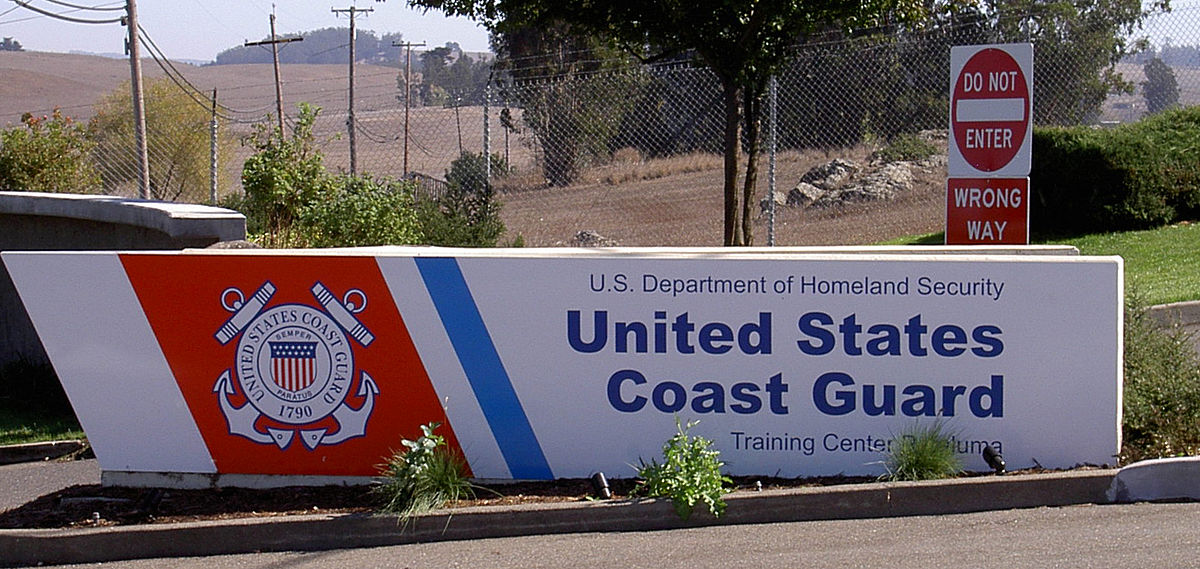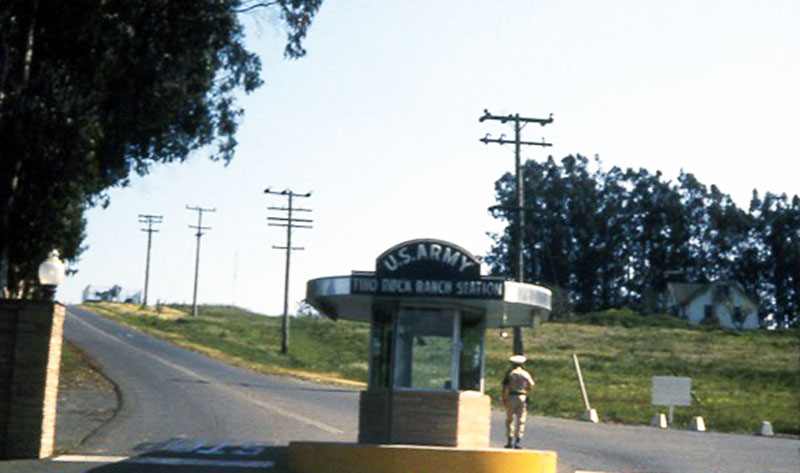
The Training Center operates no less than 10 schools offering 50 courses to approximately 4000 students a year. In addition to Coast Guard military and civilian employees, the Training Center also provides training to international students. Located in the rolling hills of the Two Rock Valley, this large training command provides apprentice level training for seven enlisted career fields and manages CG-wide training in leadership and Total Quality Management for personnel at all levels of the organization. The unit provides performance technology courses in basic instructor skills and course designing skills. The Training Center also provides courses for emergency medical technicians, maritime law enforcement, and computer operation and management. The Training Center consists of over 800 acres with 219 buildings, including 129 family units, a fully staffed clinic, a chapel, a small police and fire department, and over 200,000 square feet of training facilities.
On 7 August 1942, Two Rock Ranch Station was established as a primary monitoring station under the command of the Chief Signal Officer. The area had been dairy and poultry farms prior to War Department purchase of the nine tracts. The first contingent of troops to occupy the installation included two (2) officers and 45 enlisted men from Fort Monmouth, New Jersey, who arrived in October 1942. The only billeting consisted of tents while the former ranch houses were converted for use as administrative and operational facilities.
The primary mission of Two Rock Ranch Station was the interception of enemy radio transmissions with a secondary mission of training radio operators for service in the Pacific Theater. By 9 April 1943, 23 buildings had been constructed and the number of personnel assigned had been increased from 200 to 521 men. All buildings were camouflaged to give the appearance from the air that the installation was nothing more than a working ranch. A haystack covered the water tower, furrows were plowed and planted, and an artificial cow made of feathers over a wire frame was placed in a pen.
In October of 1943, a contingent of approximately 100 Women's Army Corps (WAC) personnel was assigned as radio operators. These personnel stayed until the end of the war.
At the end of World War II, Two Rock Ranch Station was redesignated as a special installation under the command of the Army Security Agency (ASA). The mission of monitoring radio transmissions for intelligence purposes remained the same. An ambitious program of modernization was begun wherein most of the original ranch buildings and World War II structures were replaced by more modern, permanent structures.
On 25 April 1947, a tract containing 35.37 acres was transferred from the War Department to the War Assets Administration (WAA) . An additional 5.36 acres was quitclaimed to the Two Rock Union School District on 11 December 1951.
Advances in satellite technology eventually made the antenna fields at Two Rock Ranch Station obsolete and the installation was closed on 30 June 1971. On 29 July 1971, the Department of the Army transferred the remaining 835.68 acres to the U.S. Coast Guard (USCG), Department of Transportation (DOT) for use as a USCG training center. The USCG also obtained the 35.37-acre tract that had been transferred to the WAA in 1947.
In 1985, DOT conveyed two parcels consisting of 30.89 acres and 35.37 acres to private individuals. An additional 8.56-acre tract was deeded to the Two Rock Union School District.
Due to the nature of the site, a radio receiving station, and the highly classified nature of the work performed, the use of military munitions on the site was extremely limited. During World War I1 those individuals assigned guard duty were issued small arms. These consisted of .45 caliber submachine guns and 12-guage shotguns. Ammunition and weapons were stored and issued at the guardhouse. There were no ranges during this period.
Sometime prior to 1952, two ranges consisting of a double skeet range and a 1,000-inch small arms range were constructed. The double skeet range is still in use by the U.S. Coast Guard. The small arms range was recreational in nature and was also used with M1 carbines by Boy Scouts. This range continued in use until at least 1961. Qualification for record was not performed at Two Rock Ranch Station but at other military facilities in the San Francisco Bay area.
Two magazines, buildings 539 and 540, were constructed in 1968. These were identified as ready magazine and a fixed ammunition magazine. These two magazines were used to store shotgun ammunition for the skeet range. Although the U.S. Coast Guard did not use these magazines, they continued to exist at least until 1984.
An indoor pistol range was built in 1965. This range was identified as Building T831. The U.S. Coast Guard demolished this building in 1997 and the bullet trap was environmentally mitigated. No further action is contemplated for this site.
A mock 'Vietnam Village' was constructed of local materials in the late 1960s. This mock village was used in a training course for ASA personnel in dealing with the conditions in Vietnam. According to several eyewitness accounts, only blank small arms ammunition was used in these activities.

Two Rack Ranch Station is a subordinate agency of the Signal Security Agency, Washington, D.C., per 1st OCSigO dated 25 Aug 44, SPSEC 321 Sig C Org (19 Aug 44) (C).
Two Rocks Ranch Station, Petaluma, California, is reclassified,, effective 15 Sept. 1945, as a special installation under the control of the Chief, Army Security Agency, in accordance with AR 170-10, para 63(5), pursuant to authority contained in AG 322 (4 Sep 45) OB-S-B-M, dated 6 Sept. 1945. per AG. 323.3 (17 Sep 45) OB-S-B, dated 21 Sept. 1945. Any previous instruction: in conflict with the foregoing are superseded.
Effective 12 June 1946, the Two Rock Ranch Station. Petaluma, Calif. is reclassified as a class II activity and under the jurisdiction and control of the Director of Intelligence in accordance with WD Cir. # 135, 1946 - per WD Cir. # 169 dated 11 June 1946. Rescinded. Eff 9-25-46 reclass II install under Dir./Intell in accord/WD Cir.138,46-per WD Cir. #292, dtd,9-25-46.
Two Rock Ranch Station; ,Petaluma, Calif., a Class II installation, is hereby classified as "SECRET" - per AG 680.1 (6 Sep 46)A0-1-WDGID-M, dated 12 September 1946. RESCINDED: AGAO-I (M) 680.1
ASU, Two Rock Ranch, Petaluma, Calif. reorganized under T/D #206-1900 dated 1 Oct 47 - per Sixth Army T/D for person: authorized in bulk.
ASU #6900, Two Rock Ranch. Petaluma, Calif. is reorganized under T/D #206-1900, Hq Sixth Army, 30 June 1948.
6900 ASU, Sv Det, Two Rock Ranch, Petaluma, Calif. to be reorgnd under T/D #206-1900, Hq Sixth Army, 30 June 49 & 31 Dec 49,
Effective 1 July 1950, the Dispensary, Two Rock Ranch is redesignated the US Army Dispensary, Two Rock Ranch with location Petaluma, California per GO 21, Dept of the Army, 6 July 1950
US Army Garrison, Two Rock Ranch Station is DISCONTINUED effective 1 May 62 - GO 23, US Army Security Agency, 13 Apr 62.
